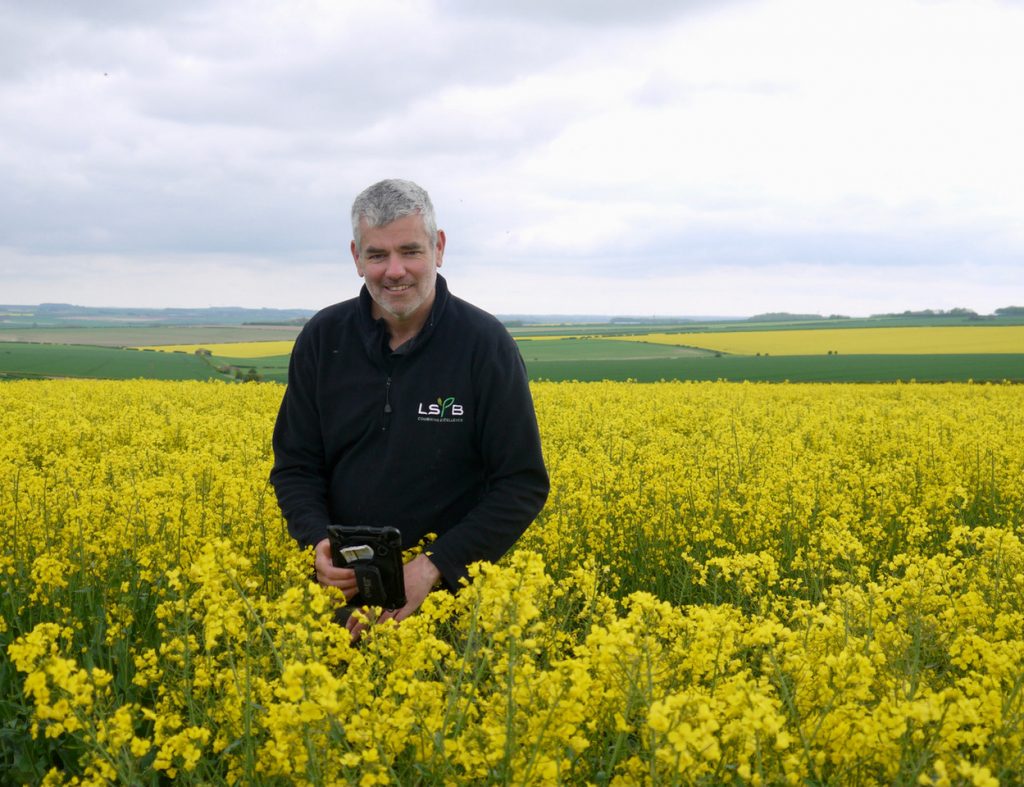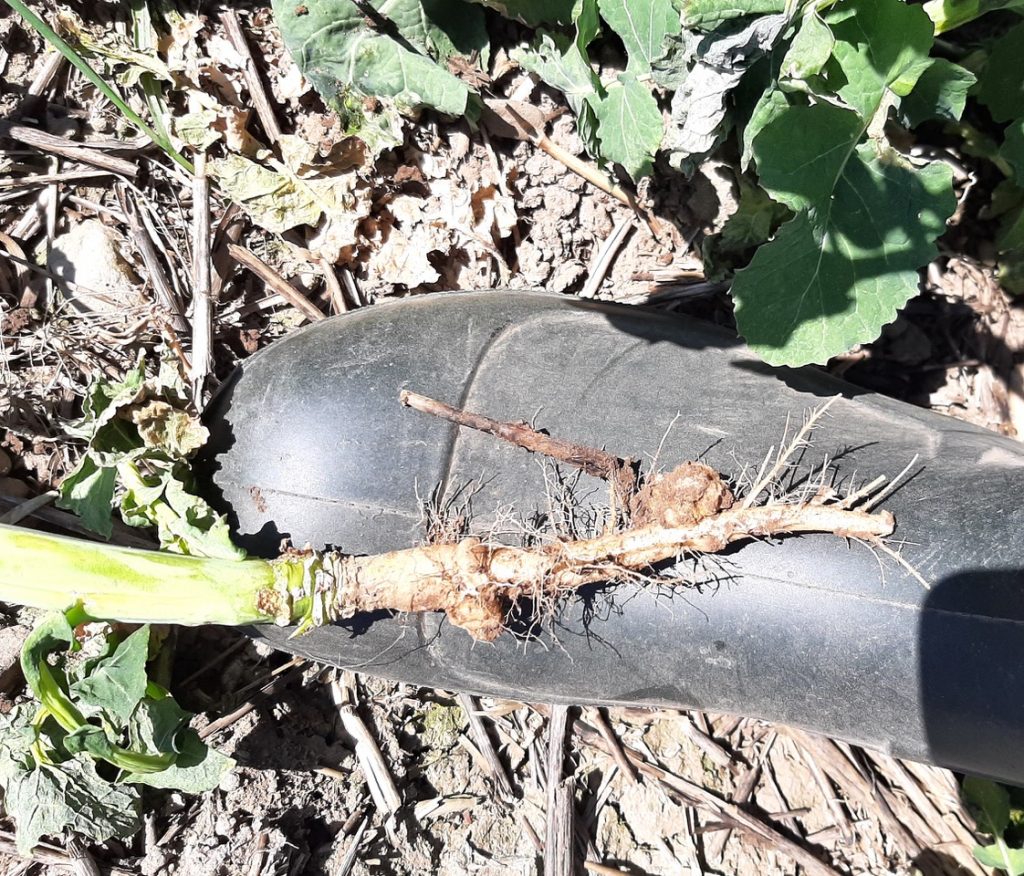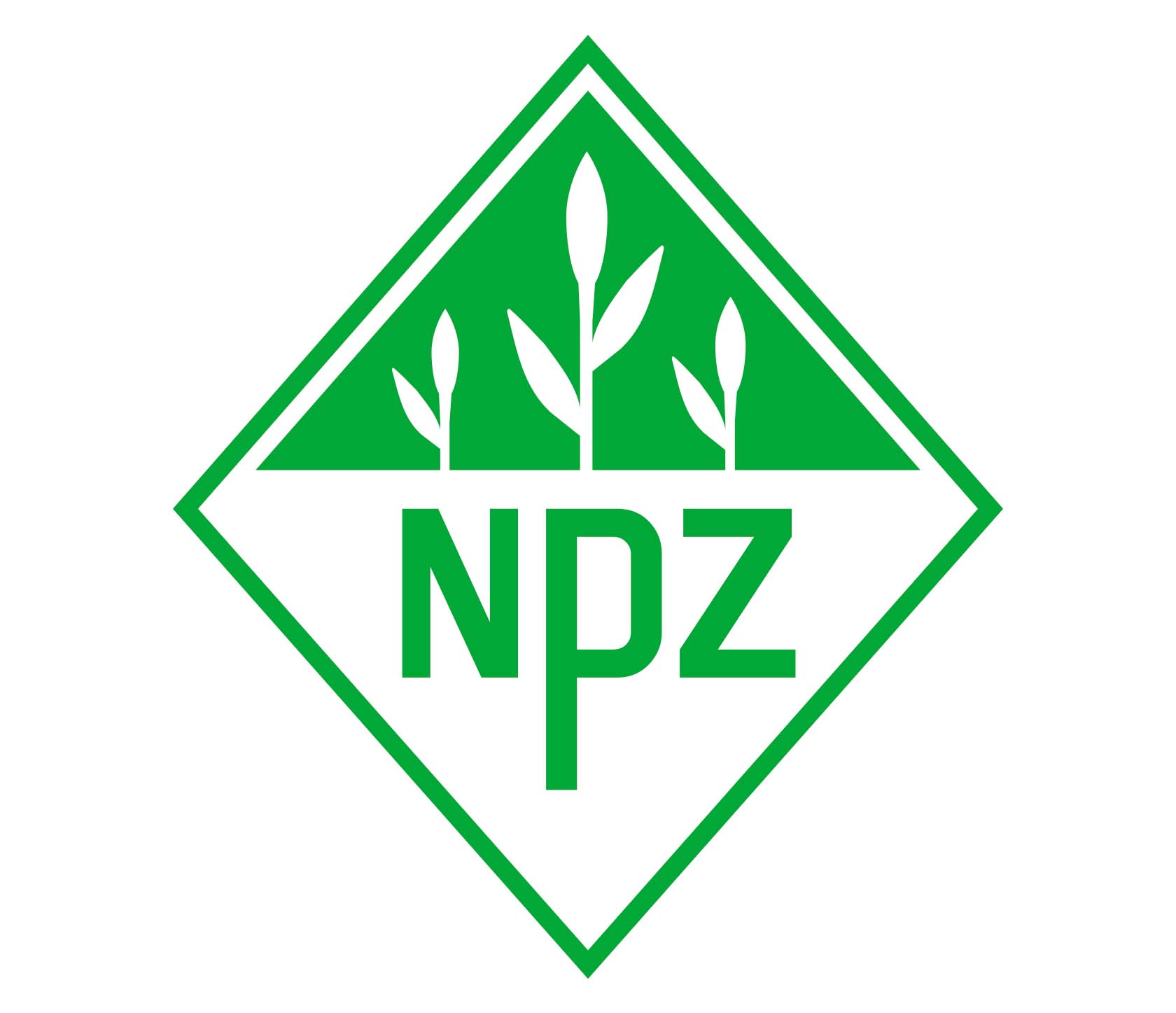Conditions last autumn with wet and warm in many parts of the country – added to early drilling to avoid adult CSFB damage – means the incidence of clubroot is on the rise in susceptible varieties for many regions of the UK.
“The incidence of clubroot is on the rise across the UK – and is particularly prevalent in Scotland, the borders, and in western regions with more mixed farming and higher rainfall,” says Craig Padley, LSPB’s oilseed and pulse breeder. “Also, on a national scale, ongoing climate change is bringing warmer, wetter winters which mean that disease pressure is likely to increase.”
He advises growers to adopt a three-pronged action plan to minimise the risk of clubroot infection and resultant yield loss to their oilseed rape crops – a loss that can be up to 50%.
Keep in mind three keywords, ‘Rotate – Review – Resist’ to defend against clubroot on your farm.
The first defence has to be sensible rotations. Clubroot is caused by the soil-borne fungus Plasmodiophora brassicae which is extremely persistent, with its resilient spores remaining viable for up to 15 years. Close oilseed rape rotations will exacerbate the disease – especially when there are warm and wet conditions as seen last autumn. Lengthening rotations is the key long-term strategy for minimising the risk of clubroot.
The second defence is continued review of crops for signs of the disease, and soil testing where it is suspected. Areas where clubroot is prevalent is one trigger, as is previous field history of crops such as turnips and other brassicas.
Nothing beats checking your crops for any sign of the disease, especially where you see poor patches in the field, as low levels of infection can go unnoticed. Liming will minimise infection by raising the pH and calcium levels in the soil, and spot-treating infected patches with lime is one idea to consider.
Testing can be carried out by a number of organisations. For example, the PGRO offer rapid molecular testing for the detection and identification and risk level evaluation of soil borne Brassica clubroot. (https://www.pgro.org/soil-testing/)
The third defence is to grow resistant varieties. The good news for growers is that LSPB’s Crome is a clubroot resistant variety on the AHDB Recommended List (RL) with a narrow gap between its yield and that of the highest yielding standard hybrid varieties.
And there is a further benefit as Crome offers excellent oil content and a good all-round agronomic package including good stem stiffness (8), resistance to lodging (8) and good LLS resistance (6).
Craig adds an important cautionary note: “as always, growers should be mindful of protecting any resistance, and clubroot is no exception. Growing varieties like Crome should be limited to areas and fields where clubroot is a problem, where testing shows it is there, or there is a high risk of infection. In this way we do not undermine a valuable genetic resistance.”



